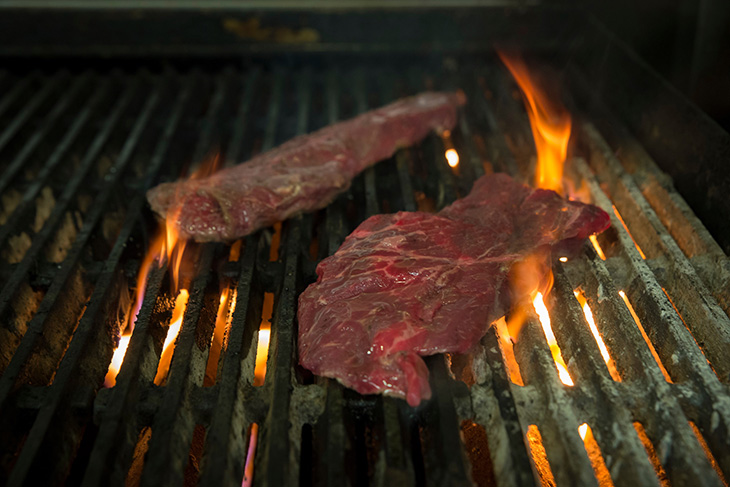
U.S retail beef prices doing well in face of increased meat supplies
Wednesday, December 19, 2018
Good news for the U.S. beef industry this holiday season, as the most recent U.S. Department of Agriculture report indicated retail beef prices remain strong despite increased meat supplies.
November Choice retail beef prices were $5.911 per pound, up from $5.840 per pound in October and 1.8 percent above the November 2017 price of $5.807 per pound. Still, the all-fresh beef retail price dropped to $5.603 per pound from the October price of $5.683 per pound.
“The all-fresh price also was down 0.5 percent from the November 2017 price of $5.629 per pound, but for the year to date, the Choice and all-fresh retail beef prices have averaged 0.2 percent and 0.7 percent above last year for the same period,” said Derrell Peel, Oklahoma State University Cooperative Extension livestock marketing specialist.
Retail pork prices dropped to $3.701 per pound in November, a decrease from the October level of $3.727 per pound and down 2.2 percent from the November price of $3.786 per pound price of one year ago.
“So far this year, retail pork prices are down 1.1 percent year over year,” Peel said.
The retail broiler composite price in November was $1.853 per pound, down from $1.889 per pound in October and a 1 percent drop from the November 2017 price of $1.871 per pound. For the year to date, retail broiler prices are unchanged from last year.
Peel said the ratio of retail beef price to broilers and to pork has averaged slightly higher in 2018 compared to 2017.
“It’s important to remember retail meat prices do not capture prices for food eaten away from home,” Peel said.
According to USDA data, 53.8 percent of total food expenditures in 2017 were for food eaten away from home, an increase from 50.9 percent five years earlier in 2012. Over the period from 2012 to 2107, at-home food expenditures increased 12.2 percent while expenditures for food eaten away from home increased by 26.1 percent.
“The fastest-growing segment of at-home food expenditures was in the category that includes farmer’s markets, followed by mail order and home delivery,” Peel said.
Farmer’s markets represented 0.8 percent of at-home food expenditures in 2017 while the mail order-home delivery category accounted for 3 percent of total at-home food expenditures. Most major away-from-home food categories have increased more than 25 percent since 2012.
“This includes food expenditures at full- and limited-service restaurants, hotels, drinking establishments and recreational places,” Peel said.
Basically, the report was full of good news for America’s beef industry, which produces 29 lean cuts of beef to meet the varied tastes of health-conscious consumers across the globe.
According to U.S. government guidelines, a serving qualifies as “extra lean” if it has less than 5 grams of total fat, 2 grams or less of saturated fat and less than 95 milligrams of cholesterol per 3.5 ounce serving. A serving qualifies as “lean” if it has less than 10 grams of total fat, 4.5 grams or less of saturated fat and less than 95 milligrams of cholesterol per 3.5 ounce serving.
A 3.5 ounce serving of lean beef provides 10 essential nutrients, including about half of a person’s daily value for protein and coming in at about 150 calories.
The Oklahoma Cooperative Extension Service is one of two state agencies administered by OSU’s Division of Agricultural Sciences and Natural Resources, and is a key part of the university’s state and federally mandated teaching, research and Extension land-grant mission.
